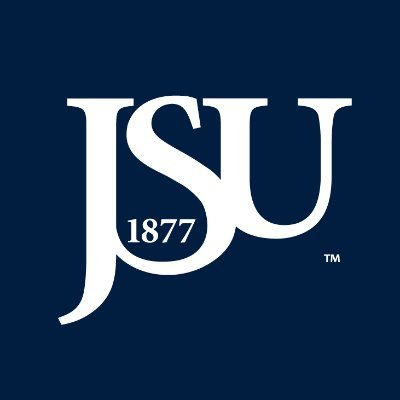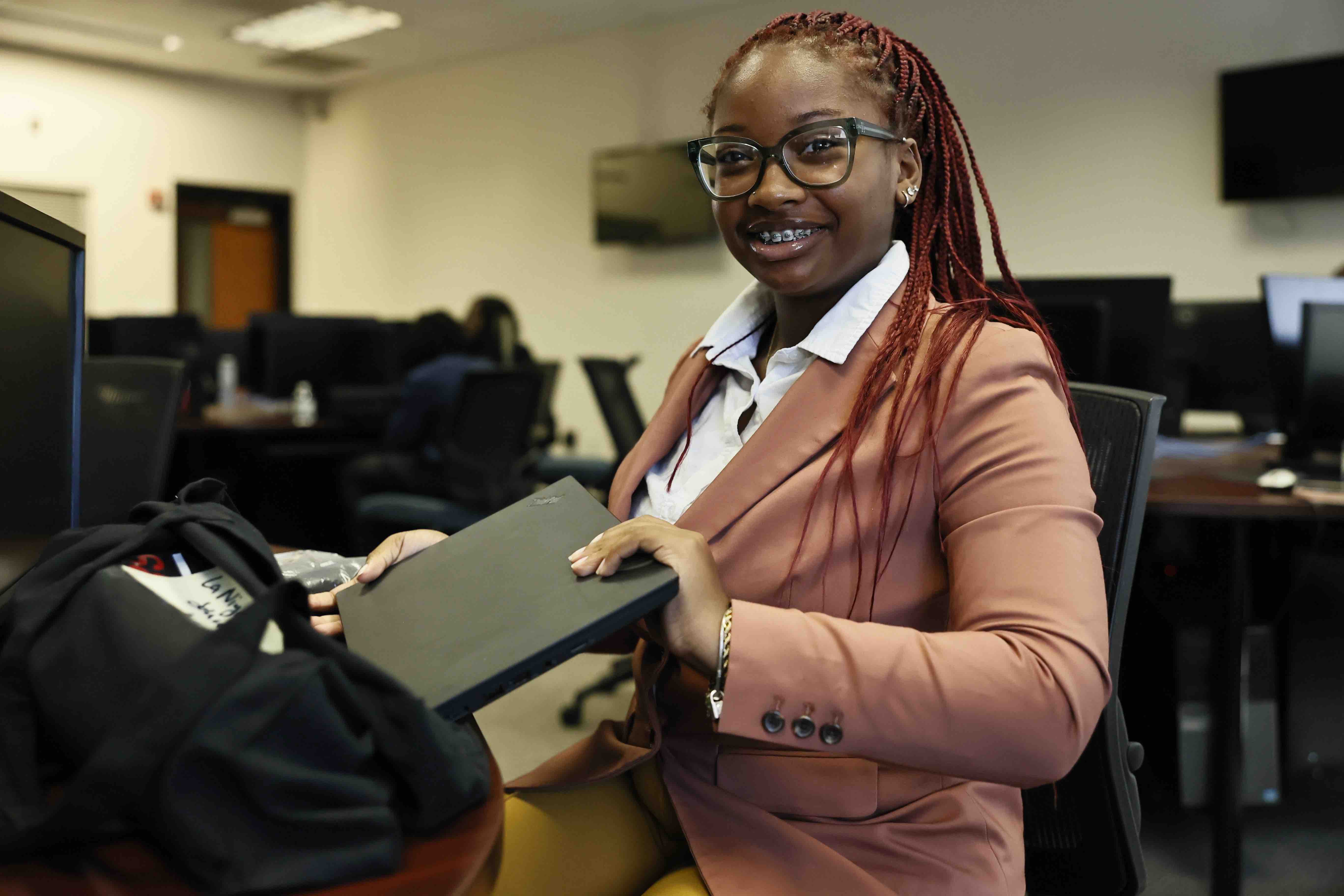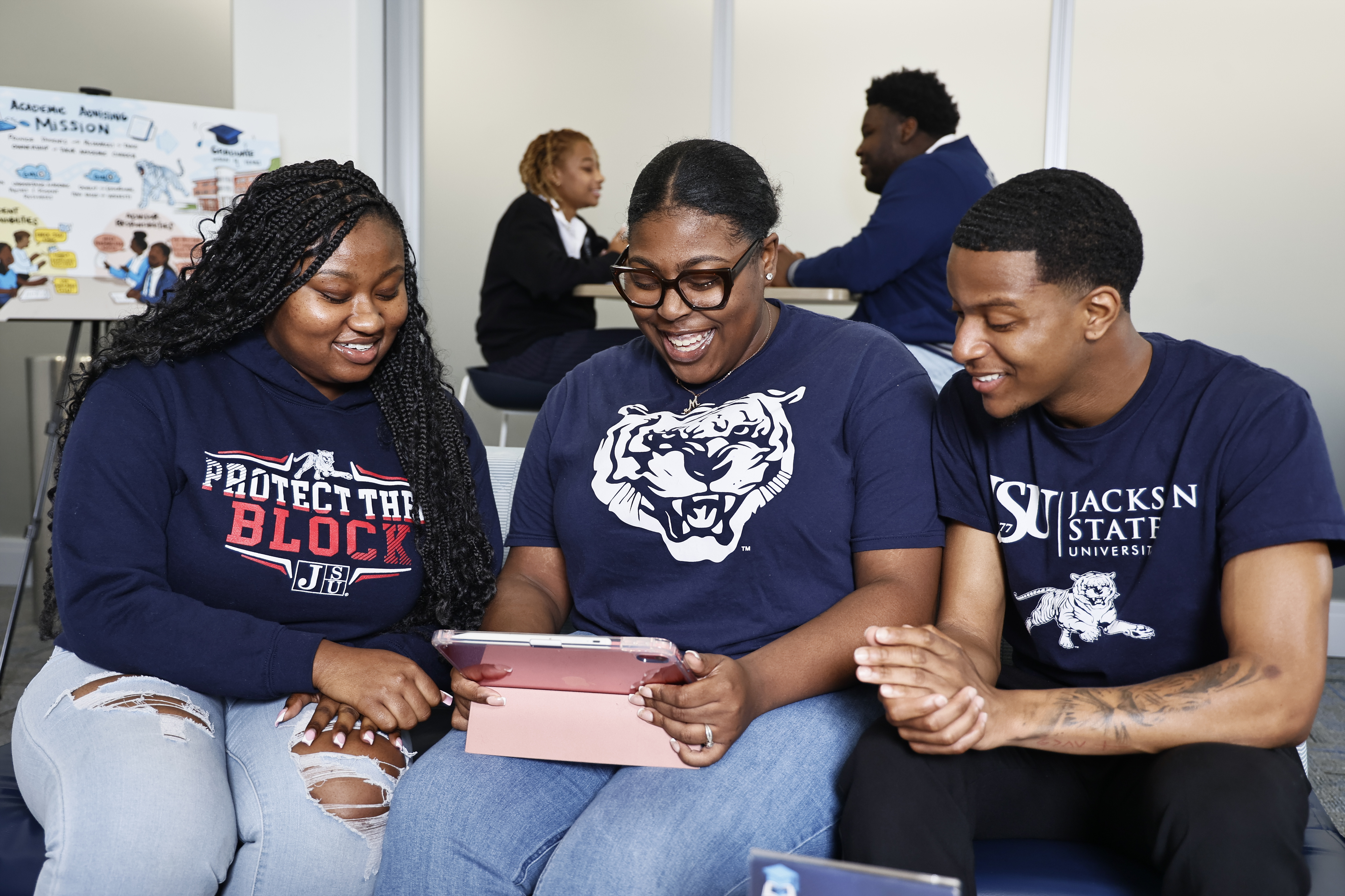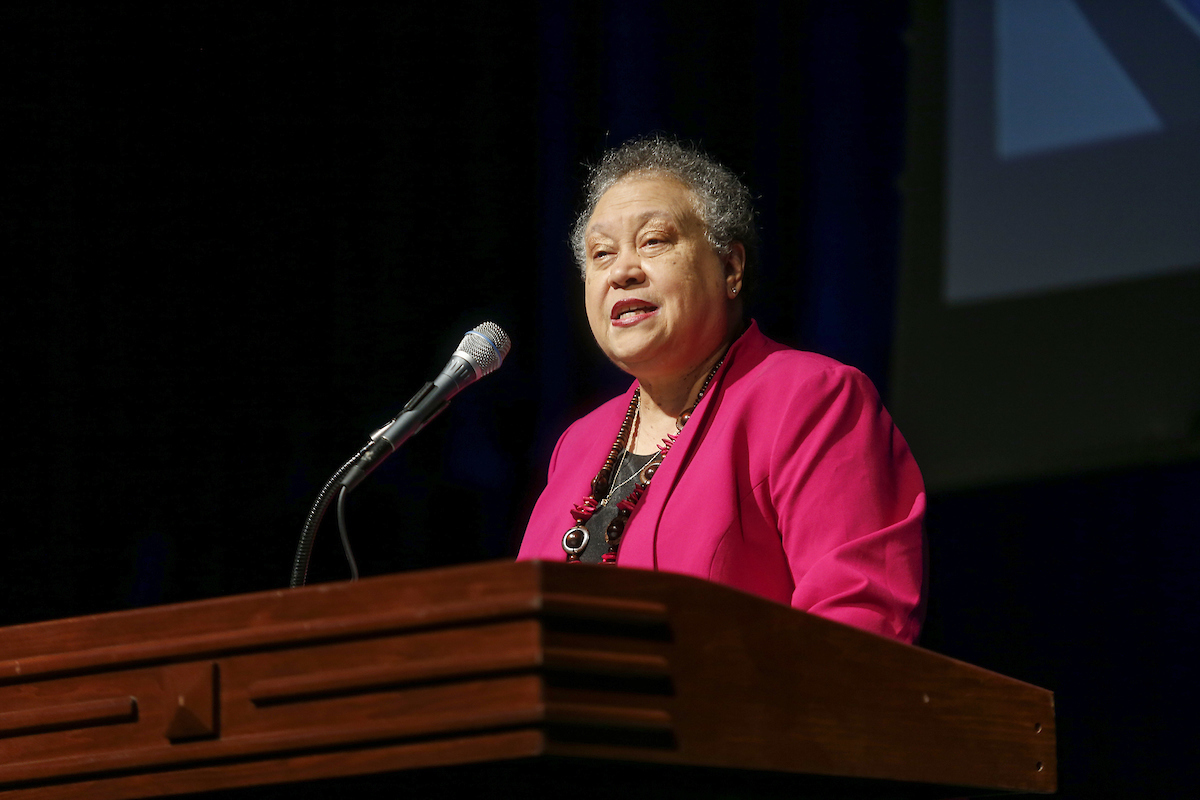
![]()
[hr]As JSU prepares to undergo a two-year assessment for reaffirmation, the president of the Southern Association of Colleges and Schools Commission on Colleges (SACSCOC) urged faculty and staff not to fear and to remember that the overall goal of accreditation is student success.
Dr. Belle S. Wheelan is the first African-American and first woman to lead the organization that sets standards for 794 institutions. She was the keynote speaker Friday for the 2019 Fall Faculty and Staff Seminar in the Rose E. McCoy Auditorium that aims to rally colleagues toward a common vision and mission for the academic year and beyond.
At JSU, that means empowering diverse students to become technologically advanced, as well as ethical and global leaders who can think critically and address societal problems.
Although the process is long, Wheelan urged JSU not to panic. “The basic premise of accreditation is not to close down institutions. It’s to help institutions continue to improve,” she said. Her message against fear was echoed by Dr. Alfred Rankins Jr., commissioner of the Mississippi Institutions of Higher Learning (IHL).
Don’t get “uptight” about the overview from SACSCOC, Rankins advised. “People get nervous, thinking something’s bad about to happen.”
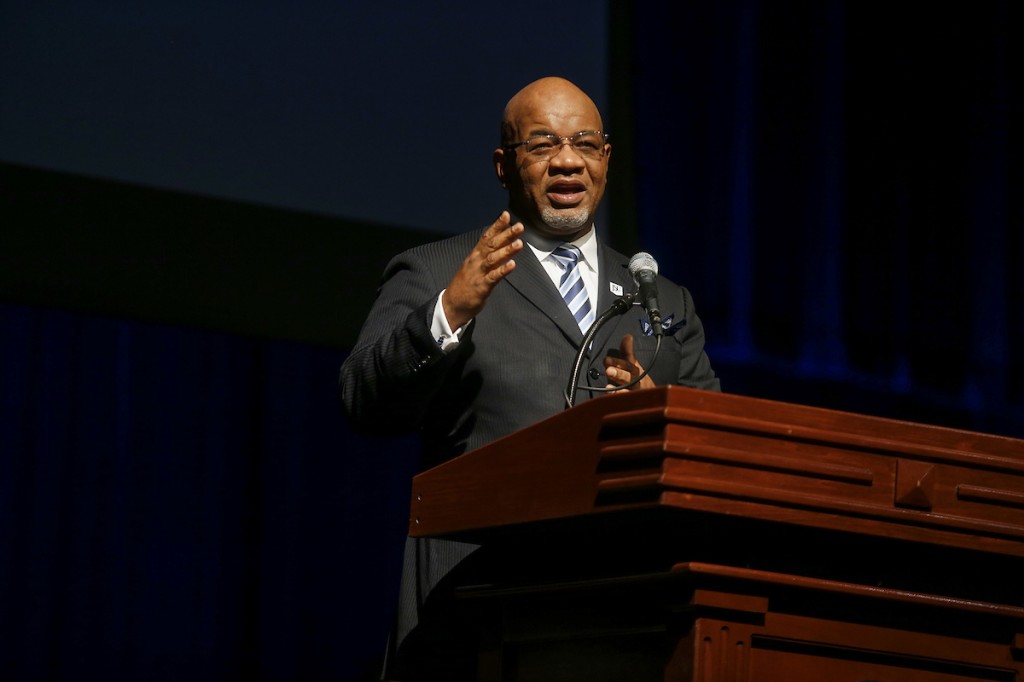
Rankins said sometimes he’s asked to address questions about the overall quality of various campuses. He explained that a large school with a $300 million endowment and all the resources in the world is “not better” than a small regional institution that may have 3,000 or 4,000 students with limited resources. “That’s because they’re both accredited by SACSCOC.”
Yesterday, today and tomorrow
Meanwhile, before Wheelan outlined the precise steps to successful compliance certification, she delivered a resounding message about institutional changes over the years.
She dubbed her keynote speech “Students Yesterday, Today and Tomorrow: Preparing for the Post-Traditional Student.”
Wheelan said, “46 years ago when I started the students were very nontraditional in my world. I spent 28 years in community colleges, and people talk about the different segments of higher education. In fact, students are students are students. I don’t care where they are in school. They’re there because they want to make a better life for themselves.”
She then described faculty, staff and students of yesterday.
When she was a college student, faculty was lionized and were “next to God” if they were “Doctor Somebody,” said Wheelan, acknowledging that academic instructors were not technologically savvy back then. However, “They walked into a classroom with no notes and just espoused knowledge. And, most of the time, they learned your name because the classes were small enough.”
[dropcap]S[/dropcap]HE points out, too, that instructors “didn’t try to hide in their offices or in the faculty lounge. They would often come to where we were to find out what we were doing and what we were thinking. And, they had high expectations of everyone. Of course, in that time, most of the students who came to college were actually academically prepared.”
[pullquote align=”right”]’The basic premise of accreditation is not to close down institutions. It’s to help institutions continue to improve.’ — Dr. Belle S. Wheelan, president of the Southern Association of Colleges and Schools Commission on Colleges (SACSCOC)[/pullquote]As for the staff of yesterday, Wheelan labeled it as “the group that ran the college.” She said staffers have all the information even though they don’t always receive information in a timely fashion.
“I don’t know how anybody would survive at an institution of higher learning without the staff – besides the fact that you all have all the files and all the keys.”
In addition, she said staffers are the ones to whom students go to find faculty when they’re not in during their scheduled office hours and to learn the real deadline for registering for classes or financial aid – or how to get financial aid.
Equally important, staffers’ jobs include bringing in students who provide tutoring, counseling and academic advisement opportunities. And, they’re also responsible for processing graduation, she said.
As for students of yesterday, Wheelan reiterated that they were prepared to go to college because “only the best and brightest were going at that particular time.” They created study groups and were self-directed, and the student population was predominantly male, she said.
In fact, she joked that the male-female ratio enticed her and her mother to attend college. “We were looking for a husband. Neither of us was successful in that vain. However, we did walk away with our college degrees, if nothing else.”
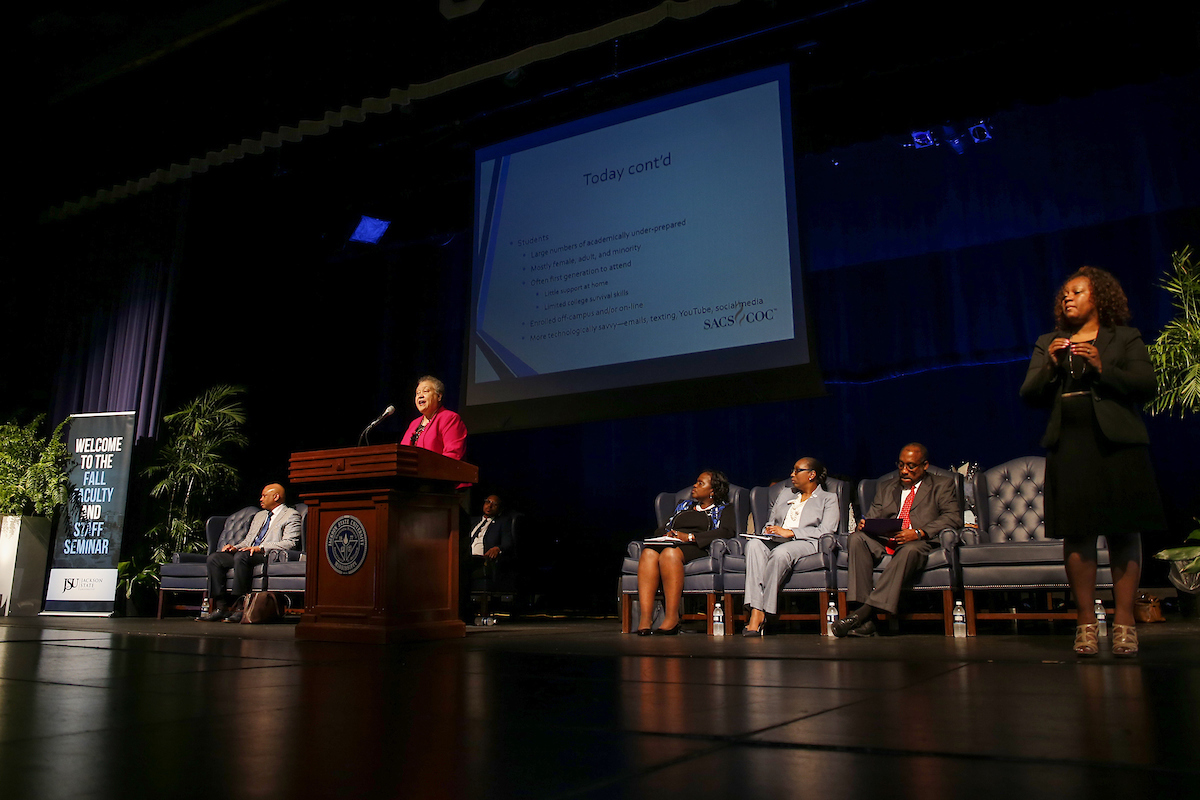
Fast-forward to today, she said faculty members “are more facilitators of learning than sages on the stage. There’s less lecturing and more discussion.” As well, she said faculty members are still “developers of specific learning outcomes” to help students understand what they need to know.
In addition, today’s faculty members must be more technologically savvy so students can have greater access to course material and lectures.
‘Nobody succeeds without educators’
Meanwhile, today’s staff “still runs everything; still have all the answers on where to go to find folks; what the real deadlines are; and how to study and take exams.” The bottom line is that staffers help students survive college, she said.
Of today’s students, Wheelan said many are “largely under-prepared. We have many more students who hadn’t thought about college until the job market changed.”
She said a lot of parents had worked jobs that didn’t demand higher education, so they don’t understand the significance of college since they still managed to provide a good living for their offspring.
Given how long institutions of higher education have been around, Wheelan said she’s alarmed there’s still a high number of first-generation college students today in 2019. “It boggles my mind,” said Wheelan, who was a third-generation college student.
[dropcap]N[/dropcap]OW, though, the male-female student ratio has changed at colleges. “It’s not unusual to have almost 60 percent of a class filled with female students,” Wheelan said. On campuses throughout the nation the population is also “largely minority, and, for the first time in a while, the post-traditional student is also over age 22.”
[pullquote align=”right”]ACCREDITATION: ‘People get nervous, thinking something’s bad about to happen.’ — IHL Commissioner Dr. Alfred Rankins Jr.[/pullquote]Nevertheless, Wheelan said despite the circumstances that currently exist on college campuses “we must learn to put students first.”
Thus, she envisions a tomorrow that will be different for faculty, staff and students.
Of faculty, Wheelan said they’re going to be fewer of them in the classroom. “We don’t have as many people interested in higher education anymore.” She cites complaints about the hours, the pay, the politics. Also, she bemoans the lack of good role models, too. Still, she firmly believes that “nobody succeeds without educators.”
To counter these changes, Wheelan suggests that institutions add instructors who have more life experiences and increase their online learning for adult students who are unable to attend campus classes. Another concept she endorses is “team teach.” For example, professors of English and biology may share a classroom in which one professional colleague edits the same assignment – one for grammar and the other for content. She believes this method would improve class attendance.
So, what would tomorrow’s campus look like?
Tomorrow’s staff, she said, still will be largely in charge. A big difference is that staff members now would become role models because the way they carry themselves conveys a “level of professionalism to students.”
Faculty, staff and everyone else – no matter your position – must understand their vital roles because “you are JSU,” and it’s not the football team, mascot or science building, she said. She said the JSU family is more than about the colors or clothes it wears.
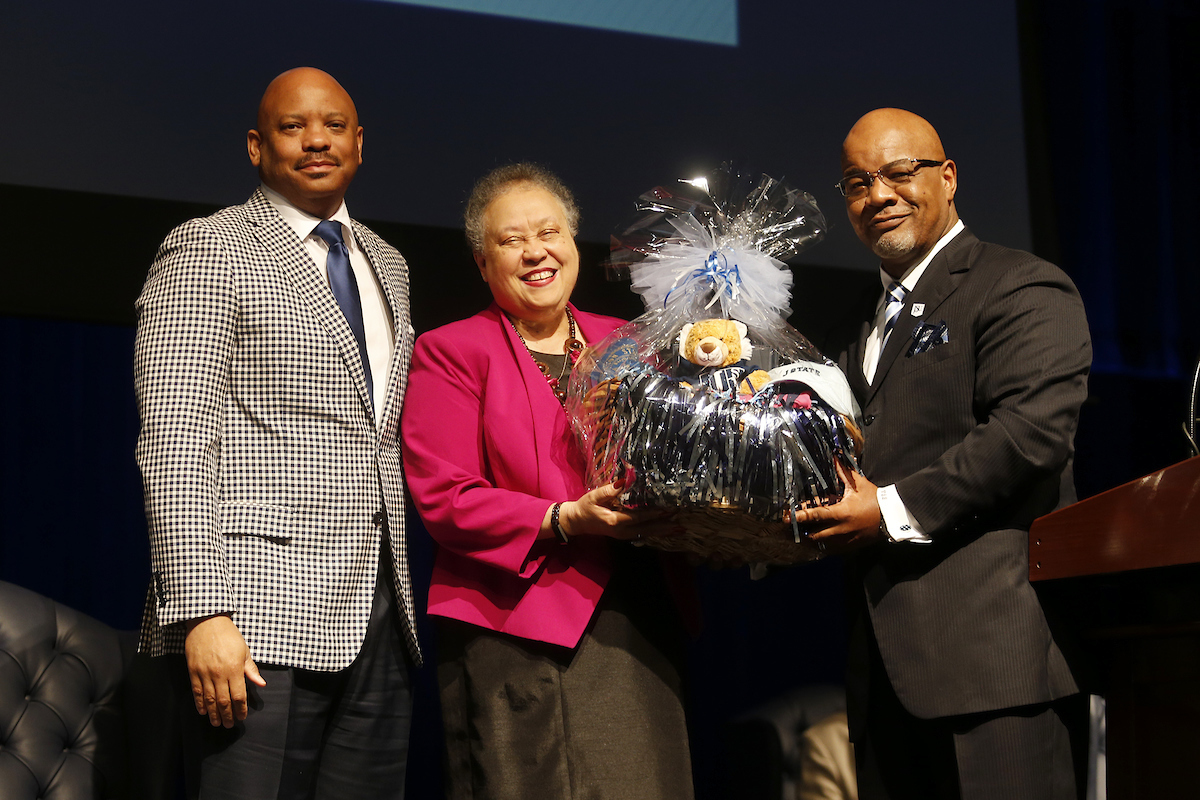
Meanwhile, tomorrow’s students will be largely Hispanic and still mostly female, Wheelan said. As well, some students will be classified as academically “under-prepared,” mostly part-time and focused primarily on employment skills. Despite this, they still will need important skills such as critical thinking, complex problem-solving and written and oral communication. She said she doesn’t care how long it takes them to graduate. “At least get them out of here with some kind of credential.”
Wheelan then re-emphasized the importance of student success and linked it directly to accreditation, calling the review process a time to “show off” to evaluators from other colleges and universities.
[dropcap]’I[/dropcap]T’s an opportunity to open your doors and everything else that you have to people who work at institutions just like yours who will come in and say, ‘Yes, we agree; you’re doing a great job here. Had you thought about making an adjustment over here? You’re really going down the wrong track compared to other institutions like yours if you do something like this.”
A full board is expected to vote on JSU’s status in December 2021. Before then, however, Wheelan recommends that the urban HBCU “document, document, document.”
[pullquote align=”right”]JSU’s leadership will have nine months to conduct a self-study called ‘compliance certification'[/pullquote]In addition, each school must comply with two new standards:
- Because of the high rate of loan defaults, institutions must establish a financial literacy program to educate students on what it means to borrow money. Wheelan indicates that bankruptcy is disallowed for federal student loans. Even in death, the estate will be charged.
- Boards must evaluate themselves and pay closer attention to what’s going on with the institutions because some “fall asleep at the wheel.” Wheelan said, “Institutions are about to close their door when board members suddenly go, “Oh, I didn’t know we had a problem.’ ”
The rigorous process begins with JSU President William B. Bynum Jr. and his leadership team meeting in Houston this December for an orientation with 79 other institutions going through reaffirmation in 2021.
After returning home from the orientation, Bynum’s leadership team over the next nine months will conduct a self-study called “compliance certification.”
This process involves JSU leaders addressing 86 standards that detail “how you feel you’re complying with each,” Wheelan said. “The faculty’s responsibility will be student-learning outcomes.” This means assessing whether students achieved the outlined goals and listing corrective actions if they haven’t.
[dropcap]A[/dropcap]FTER this, JSU’s compliance certification is sent to an “offsite committee” that meets in Atlanta. Wheelan said this panel combs through every response to see which of three categories JSU falls under: “Yes, we agree you’re in compliance. No, we don’t agree you’re in compliance. Or, I can’t figure out whether you’re in compliance or not.”
After evaluation, the report by the offsite committee will go back to Bynum along with a possible request for clarifications. Submitting clarifications is voluntary but highly recommended.
Once completed, all documents will be submitted to an “onsite committee” that will physically visit and observe the campus. This group will look at JSU’s Quality Enhancement Plan (QEP), which would show how well the HBCU is improving in its student learning.
[pullquote align=”right”]FIVE OPTIONS FOR THE EXECUTIVE COUNCIL: (1) Should JSU be reaffirmed with no follow up? (2) Should JSU be reaffirmed with a monitoring report? (3) Should JSU be reaffirmed but on warning? (4) Should JSU be placed on probation? (5) Should JSU be dropped from the membership?[/pullquote]Specifically, the panel will examine 17 areas that the Department of Education wants the onsite committee to observe, along with non-compliant issues. After gathering its data, the onsite committee submits its report to a board divided into five Compliance and Reports (C&R) committees.
At this stage, C&R will make a recommendation to the executive council of the board by answering the following questions: Should JSU be reaffirmed with no follow up? Should JSU be reaffirmed with a monitoring report? Should JSU be reaffirmed but on warning? Should JSU be placed on probation, or dropped from membership?
C&R’s recommendation then goes to the executive council, which can accept C&R’s recommendation or develop its own – either of which will be sent to the full board for the final vote in December 2021.
It may seem elementary, but Wheelan’s other advice to JSU:
- Don’t over-answer questions, or risk additional inquiries
- Write the report so that people who know nothing about the urban HBCU can learn about it
- Get colleagues outside of the university who were successfully reaffirmed in the past to read the report
- Make sure all electronics links in the document work
- Be sure that information is included about all satellite campus locations
In rallying the troops at JSU, Bynum – who occupies a seat on the SACSCOC board – described Wheelan as a “true treasure.” He reminded the audience that “SACSCOC is our friend, not our enemy.”


